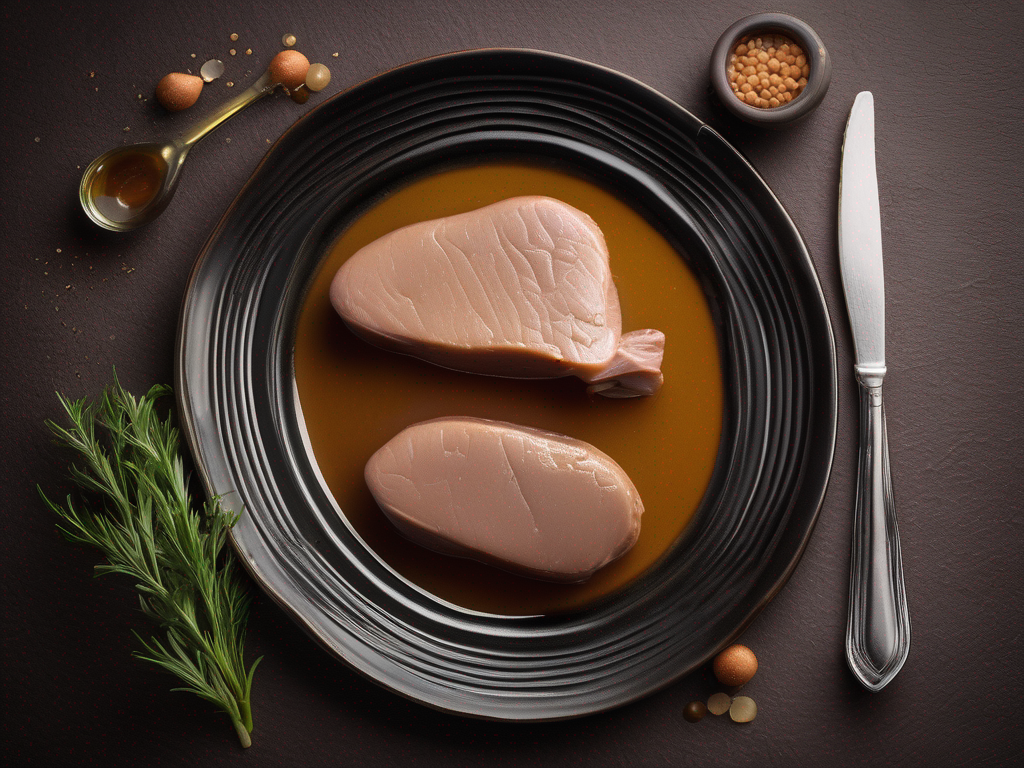
Can Goose Liver Pâté Be Consumed After the Expiration Date?
Get Your Free Food Safety Cheat Sheet
30 most common foods with instant answers. Print it and stick it on your fridge—completely free!
Can Goose Liver Pâté Be Consumed After the Expiration Date?
When it comes to food safety, expiration dates play a crucial role in determining the freshness and quality of the food we consume. Goose liver pâté, a delicacy enjoyed by many, is no exception. In this blog post, we will explore whether goose liver pâté can be safely consumed after the expiration date has passed. We will delve into the factors to consider, safety guidelines, and practical tips to ensure you enjoy your pâté safely. (Goose liver p t)
Understanding Expiration Dates on Goose Liver Pâté
Goose liver pâté, known for its rich and indulgent flavor, typically comes with an expiration date printed on the packaging. It is essential to understand the different types of expiration dates to make an informed decision about consuming the pâté past the date indicated.
Types of Expiration Dates:
-
"Best By" Date: This date indicates the recommended period for consuming the pâté while it is at its peak quality.
-
"Use By" Date: This date signifies the last date recommended for the consumption of the pâté for safety reasons.
-
"Sell By" Date: This date is primarily for retailers and informs them about how long to display the product for sale.
Factors to Consider Before Consuming Expired Goose Liver Pâté
Before deciding whether to consume goose liver pâté after the expiration date, consider the following factors:
Storage Conditions:
-
Refrigeration: Ensure the pâté has been consistently stored in the refrigerator at the recommended temperature.
-
Seal Integrity: Check the packaging for any signs of damage or tampering that may have compromised the pâté's safety.
Sensory Evaluation:
-
Appearance: Inspect the color and texture of the pâté. Any unusual discoloration or mold growth is a red flag.
-
Smell: A rancid or off-putting odor indicates spoilage and should not be consumed.
Time Since Expiration:
- Proximity to Expiration Date: The closer the pâté is to the expiration date, the higher the risk of spoilage.
Safety Guidelines for Consuming Expired Goose Liver Pâté
While it is generally not advisable to consume food items past their expiration dates, there are some safety guidelines to consider if you are contemplating consuming expired goose liver pâté:
-
Perform a Sensory Check: Conduct a thorough visual inspection and smell test before consuming the pâté.
-
Heat Treatment: If in doubt, heat the pâté thoroughly to kill any potential bacteria or pathogens.
-
Consult a Professional: When unsure about the safety of consuming expired pâté, seek advice from a food safety expert or healthcare professional.
Practical Tips for Safe Consumption
To ensure the safe consumption of goose liver pâté, follow these practical tips:
-
Label and Date: Properly label the pâté with the date of purchase to track its freshness.
-
Storage: Store the pâté in an airtight container in the refrigerator to maintain its quality.
-
Use Quickly: Consume the pâté within a reasonable time frame to enjoy it at its best.
-
Avoid Cross-Contamination: Use clean utensils and containers when handling the pâté to prevent contamination.
Conclusion
In conclusion, while it is generally recommended to adhere to expiration dates for food safety reasons, consuming goose liver pâté after the expiration date can be done with caution and proper assessment. By considering storage conditions, conducting sensory evaluations, and following safety guidelines, you can enjoy your pâté safely even after the expiration date. Remember, when in doubt, it is always better to err on the side of caution and prioritize your health and well-being. [Click here](/food/goose liver p t) to explore a variety of goose liver pâté options and elevate your culinary experience. (Goose liver p t)
Authoritative Food Safety References
These agencies and university labs inform every tip and health precaution we publish.
USDA FoodKeeper – Cold Storage Guidelines
Official refrigerator, freezer, and pantry timelines maintained by the U.S. Department of Agriculture.
Visit USDA FoodKeeperFDA Produce Safety Rule & Grower Guidance
Field-to-fridge handling practices that prevent contamination of fruits, vegetables, and leafy greens.
Visit FDA Produce SafetyCDC Foodborne Illness Prevention Hub
Surveillance-backed guidance on pathogens, symptoms, and steps to reduce foodborne illness risk.
Visit CDC Food SafetyUC Davis Postharvest Technology Center
University research detailing optimal storage atmospheres for produce after harvest.
Visit UC Davis PostharvestPenn State Extension – Home Food Preservation & Safety
Peer-reviewed extension bulletins on safe canning, chilling, and reheating practices.
Visit Penn State ExtensionGet Your Free Food Safety Cheat Sheet
30 most common foods with instant answers. Print it and stick it on your fridge—completely free! Want more? Upgrade to the complete guide with 70+ foods.
Scan your food directly and get instant safety info using our AI-powered camera feature.